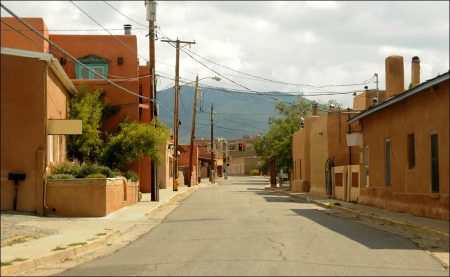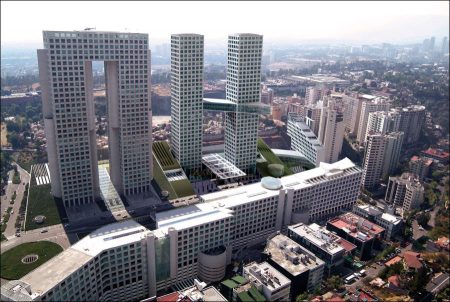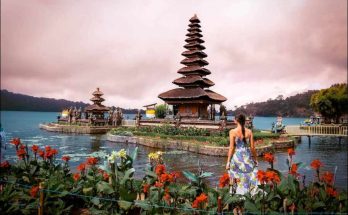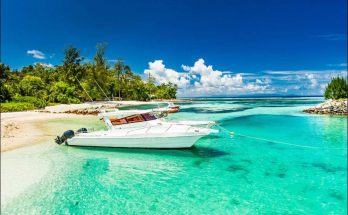The Santa Fe itself named a heavy percentage of the places through which it runs, largely because it got there before the settlements existed. Most of the names are Indian, Spanish or Santa Fe–that is, named for railroaders from switchmen to presidents. The Eastern end of the system runs to Indian names: Kansas City, Chicago, Topeka, Oklahoma City. Western and Southern divisions tend toward Spanish: Galveston, Presidio, El Paso, San Diego, Los Angeles, San Francisco.
Some names that sound Spanish aren’t Spanish at all, but Indian or invented: Pasadena, Mojave, Yosemite, Satanta, Visalia, Dinuba, Placentia. Wry sense of humor named Klondike, Siberia, Nome and other hot desert sidings. Names like Rome, Troy, Cadiz, Virgil, Ulysses do not denote any love of the classic; they’re merely short names for short sidings, easy to remember and unlikely to be confused on train orders. Foreign colonists are responsible for Exeter, Moscow, Canada, Anaheim. The last, in California, is a combination of Ana, the saint, and heim, German for home. It was a German colony, started with 1,165 acres of land bought for $2,320 in 1857.
Some names are mistakes: Santa Anna, Texas, was sent into the post office as Satanta, the name of an Indian chief; Washington thought the Texans couldn’t spell. Milano, Texas, should have been Milam, for Ben Milam, a local landowner. Washington misread it. San Angelo has a curious history. Originally, it was Santa Angela, named for a Mother Superior of the Ursuline Convent in San Antonio. The post office, for some unknown reason, changed not only the name but the sex.
The system has three locations named for ships, and used to have four. Maine, Arizona; Algoa, Texas, named for a British ship blown ashore in the 1900 hurricane; and Ironsides, California, because the USS Constitution moored near there some years ago. Samoa, on Humboldt Bay in Northern California, also was named for a ship, but the Santa Fe no longer operates there. Besides Maine, other mementoes of the Spanish-American War are Guam, Manila, Luzon and Dewey–and in Oklahoma, Yewed, which is Dewey spelled backward.
Some towns have luck with their names and some don’t. There are, for example, Antioch and Pittsburg, four miles apart on Upper San Francisco Bay. Antioch, meaning a desirable location on the water, was so named July 4, 1851, and still is. Pittsburg started out August 1, 1849 as The City of New York of the Pacific. In ’52 the post office cut it to Junction. In ’68 it became New York Landing; in ’78, Cornwall; in ’95 Black Diamond; in 1900, Diamond. In 1911 it became Pittsburg and has managed to resist change since. It probably has had more names than any town in the country.
Port Chicago, scene of a disastrous wartime explosion in 1944, originally was Bay Point, a lumber town remarkable for its municipal saloon, the profits from which paid for water, street lights, sewers and other public services.
Sentimental landholders, townsite platters and railroaders named many places. Shirley, California, is for the wife of a stenographer in the general manager’s office. Lamanda Park in the same state is a combination of Leonard and Amanda Rose. Lenwood stems from Ellen Woods, wife of the founder. Visalia, California, comes from Nathaniel Vise and his wife, Thalia. Chanesa, Texas, is a combination of Charles, Nellie and Sarah, children of C. W. Kouns, once general manager. Edruvera came from Edwin, Ruth and Vera, children of a director of the old Orient Line. Floydada, Texas, is simply Floyd and Ada Price, made immortal.
Hodge, California, was named by Arthur Brisbane for two brothers who homesteaded near by. In the winter months the great editor lived on his alfalfa ranch here and the Santa Fe dispatched his daily newspaper columns from a telegraph station set up in a boxcar on a sidetrack.
Salome, Arizona, on the Parker-Cadiz cutoff west of Wickenburg, was named by Dick Wick Hall for Mrs. Grace Salome Pratt, who was postmistress for awhile. Mr. Hall, who founded the place in 1904, made it famous with the Salome Sun and the Salome frog, that never saw water. It was known for years as Salome, Where She. Danced. The town is a trading center for the rich Happy Valley mining districts.
Incidentally, just west of Santa Fe track down the Pecos River near the Texas-New Mexico state line, is Langtry–which was not named for Lily Langtry. Judge Roy Bean, a local gavel-banger, won some fame by informing the Jersey Lily that he had named the town for her and to her death she believed it. The fact is that it was named some years prior to Judge Bean’s advent into the region–for a section-foreman.
Visits: 115




